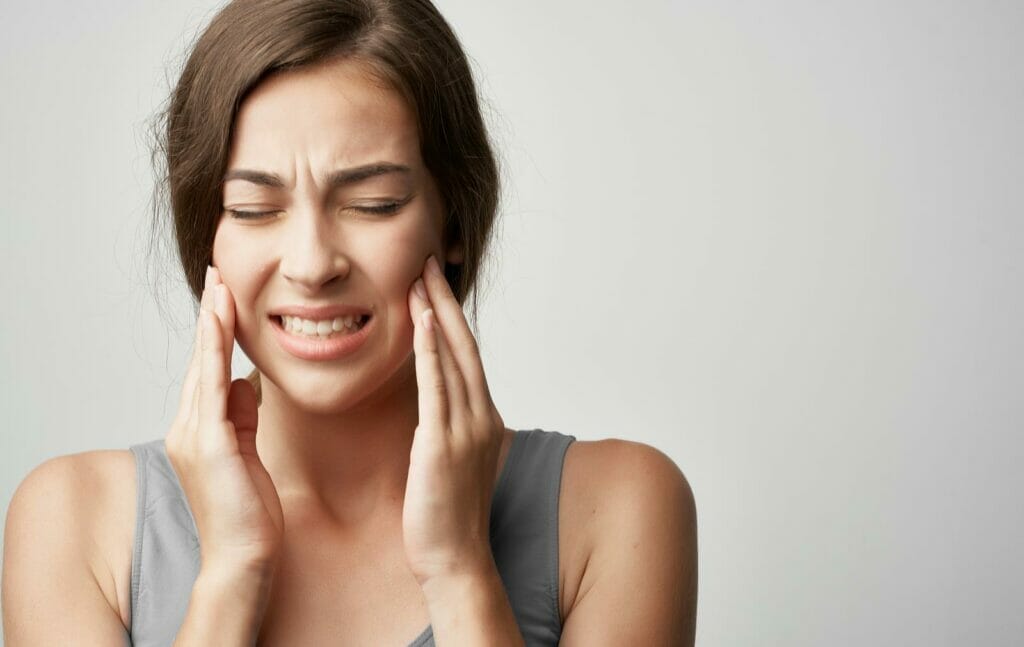If so, you could be suffering from temporomandibular joint dysfunction, an extremely common condition that affects the jaw, head and neck and is often an underlying cause of recurrent symptoms of pain, headaches and migraines.
Our expert osteopath and sports therapist, Alienor Sandt gives the lowdown and advice on this pernicious problem.

The temporomandibular joint, aka the TMJ, is located at the base of the skull in front of the ear and connects the lower jaw to the upper jaw. It essentially is responsible for opening and closing our jaw, for example when we chew or speak, or yawn.
The temporomandibular joint is basically like a hinge – that can work in two ways. The first way is to simply open and close the mouth, just like a hinge on a door. The second way is a sliding motion called translation, wherein your lower jaw moves down and forwards. This motion helps the joint to move backwards and forwards and from side to side for actions such as eating, yawning and singing – some of the most common.
Since the temporomandibular joint is so important and in constant use, it can be easily injured or put out of alignment.
TMJ dysfunction is an umbrella term for when people have jaw pain, and it can be caused by trauma, infection, teeth clenching, connected tissue disorders and disc misalignment, which by that I mean in the jaw we have an articular disc that lays between the two joints and that can get out of place causing the jaw to click and make a popping sound.
The joint is also a key cornerstone between the head and the neck, and so often it's accompanied by other symptoms, such as headaches and neck pain – which can often be an underlying cause of the TMJ dysfunction and vice versa.
“We offer a lot of treatment to help TMJ disorder, we can help with the realignment and we can help with the relieving symptoms by working around the joint itself.”
“At The Art of Healing, we use our hands to help with the joint itself and the muscles that have a huge impact on that joint. We work with the head and even the spine and those all around to make sure they are all working as they should be and not causing any pain to the jaw. We also use dry needling which helps the disorder.”
“Yes, we have a very high success rate with temporomandibular joint dysfunction here at the clinic, we can help all patients that come to us. It does take time to treat, a few sessions are needed and also the longer a client leaves to get treatment the longer it takes to repair - we highly recommend seeing a specialist as soon as possible.”
“It's obvious that Alienor is clearly very passionate and good at what she does. From the very first treatment she was able to help me with my jaw and migraine issues using a combination of acupuncture (which I'd never had before) and osteopathy treatment. Alienor is gentle, kind and obviously cares a great deal about her patients. I'm feeling so much better- thank you!”
Find out more how Alienor or our amazing team of osteopaths, physiotherapists, massage therapists and acupuncturists could help with your temporomandibular joint dysfunction - call us today on 0203 146 6755 or book online at www.theartofhealing.uk